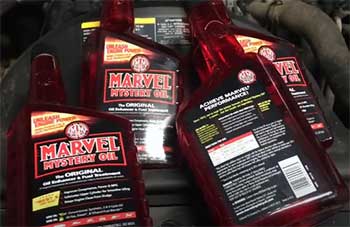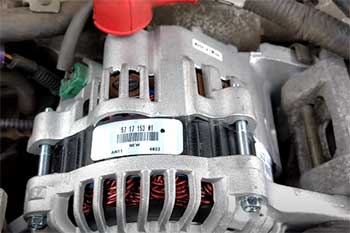As a car enthusiast who’s spent years tinkering under the hood, I’ve learned that choosing the right oil filter can make or break your engine’s health. Today, I’m comparing NAPA Gold and Platinum oil filters to help you decide which one suits your ride.
Through my hands-on experience and research, I’ll break down their features, pros, cons, and performance to guide you toward the best choice for your vehicle.
Whether you’re a daily commuter or a weekend warrior, this article will equip you with the knowledge to keep your engine purring.
A Brief Comparison Table
| Feature | NAPA Gold | NAPA Platinum |
| Filter Media | Glass-enhanced cellulose | Wire-backed full synthetic |
| Efficiency | 95% @ 20 microns | 50% @ 20 microns (improves over time) |
| Oil Change Interval | 5,000–7,500 miles | 7,500–10,000 miles (up to 15,000) |
| Anti-Drainback Valve | Silicone (most models) | Silicone |
| Sealing Gasket | Nitrile rubber | Hydrogenated Nitrile Butadiene Rubber (HNBR) |
| Construction | Metal end caps, steel spiral tube | Stronger can, metal end caps, steel spiral tube |
| Best For | Conventional/synthetic blend oils | Full synthetic oils, harsh conditions |
| Price Range | $6–$12 | $10–$20 |
| Flow Rate | 9–11 GPM | 7–9 GPM |
My Journey With Oil Filters
I’ve been changing my own oil since I was 16, starting with my beat-up ’98 Honda Civic. Back then, I didn’t think much about oil filters—just grabbed whatever was cheapest at the auto parts store.
But after a few sketchy filters led to sluggish performance and even a minor oil leak, I realized these little canisters are the unsung heroes of engine longevity. Over the years, I’ve tested dozens of brands, and NAPA’s Gold and Platinum filters consistently stand out.
They’re both made by Wix, a name synonymous with quality, but they cater to different needs. Let’s explore what makes each one tick.
NAPA Gold: The Reliable Workhorse
The NAPA Gold filter has been my go-to for years, especially for my daily driver, a 2015 Toyota Corolla. It’s like the dependable friend who’s always there when you need them—nothing flashy, but gets the job done.
Key Features of NAPA Gold
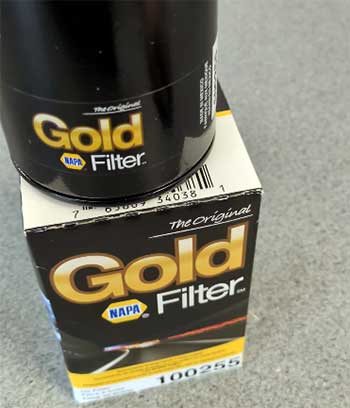
- Glass-Enhanced Cellulose Media: The filter uses a blend of cellulose and glass fibers, which traps dirt and debris effectively. It’s rated at 95% efficiency for particles 20 microns and larger, meaning it catches most contaminants that could harm your engine.
- Silicone Anti-Drainback Valve: Most Gold filters come with a silicone valve that prevents oil from draining back when the engine’s off, ensuring quick lubrication on startup.
- Durable Construction: With metal end caps and a steel spiral center tube, it’s built to withstand typical driving conditions without collapsing.
- Oil Flow Rate: It delivers 9–11 gallons per minute (GPM), which is solid for most vehicles, ensuring your engine gets oil fast.
- Price Point: Typically $6–$12, it’s budget-friendly without skimping on quality.
Pros of NAPA Gold
- High Filtration Efficiency: That 95% efficiency at 20 microns is impressive for a filter in this price range. It’s more than enough for most engines running conventional or synthetic blend oils.
- Affordable: I’ve snagged Gold filters on sale for as low as $3.60 during NAPA promotions, making it a steal for the quality.
- Versatile: Works well for standard oil change intervals (5,000–7,500 miles) and handles daily commutes or light highway driving with ease.
- Trusted Brand: Being a Wix product, you’re getting proven engineering. I’ve never had a Gold filter fail me in over a decade of use.
- Easy Availability: NAPA stores are everywhere, and I’ve always found the Gold in stock for my vehicles, from sedans to SUVs.
Cons of NAPA Gold
- Not Ideal for Extended Intervals: If you’re pushing past 7,500 miles or using full synthetic oil, the Gold’s media can clog faster than the Platinum’s synthetic media.
- No Wire Mesh Support: Unlike the Platinum, the Gold’s media lacks wire backing, so it’s slightly less durable under extreme conditions like towing or high heat.
- Basic Gasket: The nitrile rubber gasket is fine for most uses but doesn’t match the Platinum’s HNBR gasket for high-temperature resilience.
I’ve used the Gold for my Corolla’s 5,000-mile oil changes with synthetic blend oil, and it’s never let me down. But when I started towing a small trailer with my truck, I noticed the Gold wasn’t keeping up as well—hence my pivot to the Platinum for heavier-duty applications.
NAPA Platinum: The Premium Powerhouse
The NAPA Platinum is the Gold’s fancier cousin, designed for those of us who push our vehicles harder or use full synthetic oils. I switched to the Platinum for my 2019 Ford F-150 when I started doing long hauls and occasional towing.
It’s pricier, but the extra features make it worth considering.
Key Features of NAPA Platinum
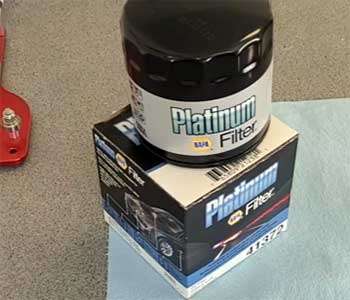
- Wire-Backed Synthetic Media: The Platinum uses 100% synthetic media reinforced with wire mesh, offering superior durability and dirt-holding capacity. It’s designed for extended oil change intervals, up to 15,000 miles in some cases.
- Silicone Anti-Drainback Valve: Like the Gold, it ensures oil stays in place for quick engine startups.
- HNBR Sealing Gasket: This high-grade gasket withstands extreme temperatures better than the Gold’s nitrile rubber, reducing the risk of leaks in harsh conditions.
- Stronger Can Design: The Platinum’s canister is beefier, built to handle high-pressure scenarios like stop-and-go traffic or towing.
- Oil Flow Rate: It flows at 7–9 GPM, slightly lower than the Gold, prioritizing filtration over speed.
Pros of NAPA Platinum
- Extended Oil Change Intervals: Rated for 7,500–10,000 miles (and up to 15,000 with synthetic oil), it’s perfect for those who want fewer trips to the garage.
- Superior Durability: The wire-backed media and stronger can make it ideal for harsh conditions—think dusty roads, extreme heat, or heavy towing.
- Synthetic Oil Compatibility: If you’re running full synthetic oil (like I do in my F-150), the Platinum’s media is designed to maximize its benefits.
- High Dirt-Holding Capacity: The synthetic media holds more contaminants before clogging, which is a lifesaver for long-distance drivers.
- Premium Build Quality: From the HNBR gasket to the spiral center tube, every component screams quality, giving me peace of mind on long trips.
Cons of NAPA Platinum
- Lower Initial Efficiency: At 50% efficiency for 20-micron particles, it’s less effective out of the box than the Gold. However, efficiency improves as the filter traps more debris over time.
- Higher Cost: Priced between $10–$20, it’s a bigger investment, especially if you’re not maximizing its extended interval capabilities.
- Lower Flow Rate: The 7–9 GPM flow is slightly slower than the Gold, which might concern those prioritizing oil delivery speed.
- Availability Issues: Some NAPA stores don’t stock the Platinum for every vehicle, and I’ve had to order it online a few times.
- Overkill for Short Intervals: If you’re changing oil every 5,000 miles, the Platinum’s benefits are wasted, and you’re better off with the Gold.
Using the Platinum in my F-150 has been a game-changer. On a 10,000-mile road trip last summer, I didn’t worry about oil changes, and my engine ran smoothly despite towing a camper through desert heat.
But for my wife’s Honda CR-V, which sees mostly city driving, I stick with the Gold to save a few bucks.
Head-to-Head Comparison of NAPA Gold And Platinum Oil Filters
Choosing between the NAPA Gold and Platinum depends on your driving habits, oil type, and budget. Let’s break it down by scenario.
- Daily Commuters and Light Driving
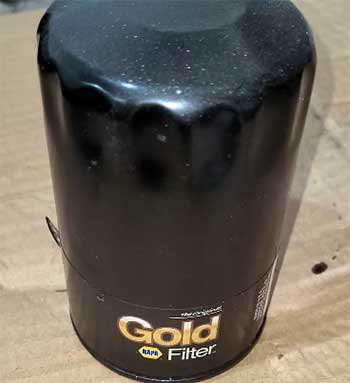
If you’re like me, driving a sedan or SUV for work commutes or errands, the NAPA Gold is your best bet.
Its 95% efficiency at 20 microns ensures your engine stays clean, and the 5,000–7,500-mile interval aligns with most manufacturer recommendations.
Pair it with a synthetic blend or conventional oil, and you’re getting top-tier protection without breaking the bank.
I’ve used the Gold for years on my Corolla, and my engine’s still humming at 150,000 miles.
- Long-Distance Drivers and Synthetic Oil Users
For those racking up highway miles or using full synthetic oil, the Platinum shines. Its synthetic media and extended intervals (up to 15,000 miles) mean fewer oil changes, saving you time and money in the long run.
The wire-backed media and HNBR gasket are built for durability, making it ideal for cross-country trips or extreme weather. My F-150’s performance on long hauls with the Platinum convinced me it’s worth the extra cost for heavy-duty use.
- Harsh Conditions and Towing
If you’re towing, driving on dusty roads, or dealing with stop-and-go traffic, the Platinum’s your pick. Its stronger construction and higher dirt-holding capacity handle the extra strain better than the Gold.
When I started towing with my truck, the Platinum kept my oil cleaner longer, even in 100°F heat. The Gold’s fine for light towing, but it can’t match the Platinum’s resilience in extreme scenarios.
- Budget-Conscious Drivers
If cost is a major factor, the Gold wins hands-down. It’s half the price of the Platinum in some cases, and sales at NAPA can make it even cheaper.
For budget builds or older vehicles, the Gold provides excellent filtration without the premium price tag. I’ve used it on my project cars without issue, proving you don’t need to spend big to get quality.
My Experience With NAPA Gold And Platinum Oil Filters
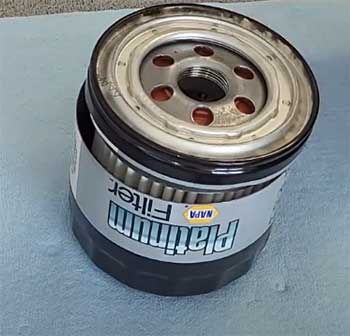
To get a feel for these filters, I’ve cut open used ones after oil changes—a bit of a messy hobby, but it’s revealing.
The Gold’s cellulose media looks dense and traps a ton of gunk, but it can start to degrade after 7,000 miles.
The Platinum’s synthetic media, on the other hand, holds up better, with less tearing even after 10,000 miles.
The wire mesh backing is a nice touch, keeping the media intact under pressure.
I also checked oil pressure on my vehicles.
With the Gold, my Corolla’s oil pressure stays steady, thanks to the higher flow rate.
The Platinum’s slightly lower flow didn’t cause issues in my F-150, but I noticed a minor delay in pressure buildup on cold starts compared to the Gold. It’s a small trade-off for the Platinum’s extended life.
Industry Insights: What Mechanics Say
I’ve chatted with mechanics at local shops and online forums like BobIsTheOilGuy to get their take. Most agree the Gold is a solid all-rounder, equivalent to the standard Wix filter, and perfect for typical driving.
The Platinum, akin to the Wix XP, gets mixed reviews. Some love its durability for long intervals, but others argue its initial 50% efficiency at 20 microns is a drawback for short oil change intervals.
One mechanic told me, “If you’re not going past 7,500 miles, save your money and get the Gold.”
Addressing The Platinum Discontinuation Rumors
In 2023, I read on forums like FordTremor.com that NAPA might’ve discontinued the Platinum filter. Panic set in—I’d just stocked up for my F-150! But after calling my local NAPA store, they confirmed it’s still available for most applications, though some models are harder to find.
If you’re worried about availability, check NAPA’s website or opt for the Wix XP, which is nearly identical.
Maintenance Tips For Both Filters
Regardless of which filter you choose, proper installation is key. Here’s what I do:
- Lubricate the Gasket: Rub a thin layer of clean oil on the gasket to prevent binding and ensure a tight seal.
- Hand-Tight Plus 3/4 Turn: After the gasket touches the mating surface, give it an extra 3/4 turn to avoid leaks. I learned this the hard way after a Gold filter loosened on my old Civic.
- Check Your Manual: Stick to your vehicle’s recommended oil change intervals, even if the Platinum can go longer. My F-150’s manual suggests 10,000 miles with synthetic oil, so I don’t push it to 15,000.
- Use the Right Oil: Pair the Gold with conventional or synthetic blends, and the Platinum with full synthetics for best results.
Also Read: Is MANN Better Than MAHLE Oil Filter?
Frequently Asked Questions (FAQ)
It depends on your needs. For most drivers, NAPA Gold offers excellent filtration at a great price. For synthetic oils and harsh conditions, NAPA Platinum or Fram Ultra are top contenders.
Yes, NAPA Gold filters are manufactured by Wix, ensuring high-quality construction and performance.
Some NAPA Gold filters are made in China, but Wix also has manufacturing in the USA and other countries. Check the packaging for origin details.
The Platinum is 50% efficient at 20 microns initially, improving as it traps more debris over time.
Wrapping Up
Choosing between NAPA Gold and Platinum oil filters comes down to how you drive and what you value. If you’re looking for a reliable, affordable filter for everyday driving, the Gold’s got your back—it’s served me well for years.
But if you’re pushing your vehicle with long trips, towing, or synthetic oil, the Platinum’s durability and extended intervals are worth the splurge. Whatever you pick, you’re investing in your engine’s future.
So, grab a wrench, pick your filter, and keep your ride running smooth—you’ve got this.
